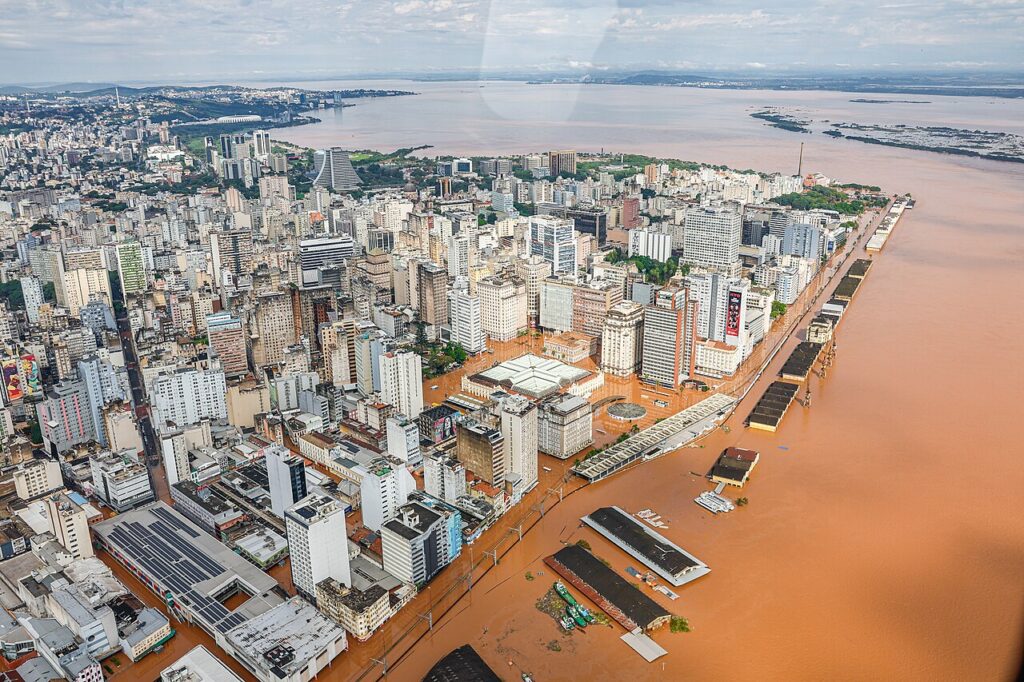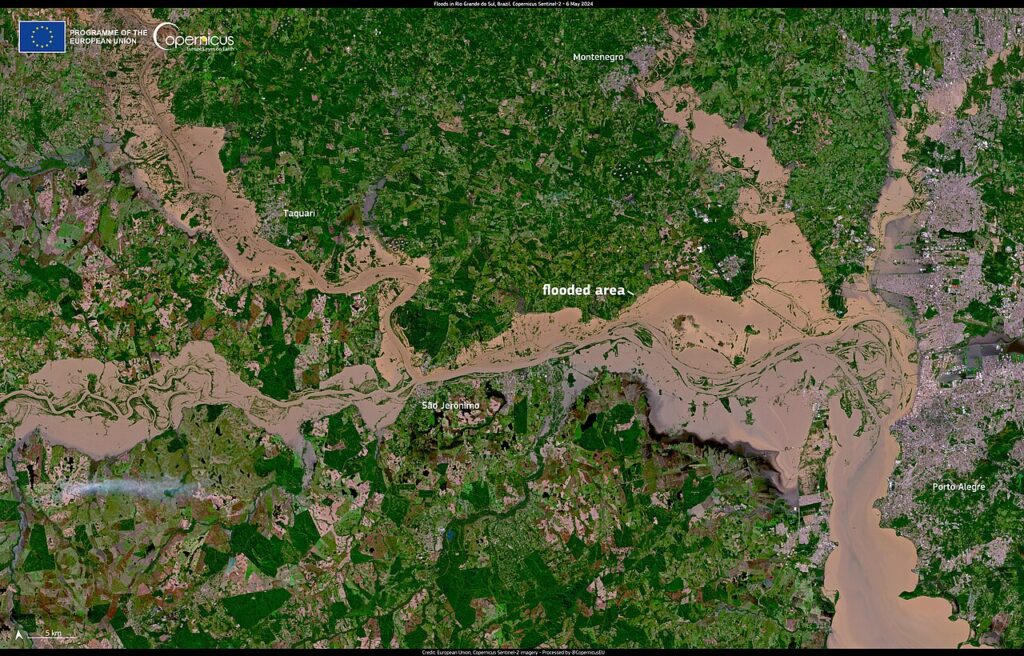In 2024, the state of Rio Grande do Sul was severely affected by large-scale floods, causing devastating impacts on both urban and rural areas. Intense and prolonged rainfall, combined with insufficient drainage infrastructure, resulted in floods that left many cities and villages submerged.
The impacts of the floods were extensive, ranging from significant economic losses to severe social and environmental consequences. Economically, agriculture was one of the most affected areas. Entire crops of soybeans, corn, and wheat were destroyed, compromising the annual harvest and putting the livelihoods of thousands of farmers at risk. Additionally, transportation infrastructure, including roads and bridges, suffered extensive damage, hindering the flow of goods and increasing logistical costs.
In urban areas, many residents lost their homes and belongings. Entire neighborhoods were evacuated, and temporary shelters were set up to accommodate displaced families. The floods also disrupted essential services such as potable water and electricity supply and overwhelmed health systems with an increase in waterborne diseases.
Socially, the floods exacerbated existing inequalities. Low-income communities, located in more vulnerable areas, were disproportionately affected. The recovery of these areas tends to be slower due to lower financial capacity and limited access to assistance resources.
From an environmental perspective, the floods caused soil erosion, loss of biodiversity, and contamination of water bodies with waste and chemicals. Local fauna was severely impacted, with many animals losing their natural habitats and being forced to relocate.

